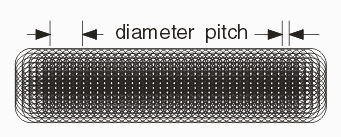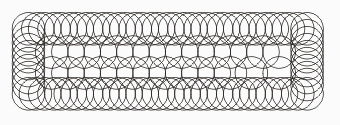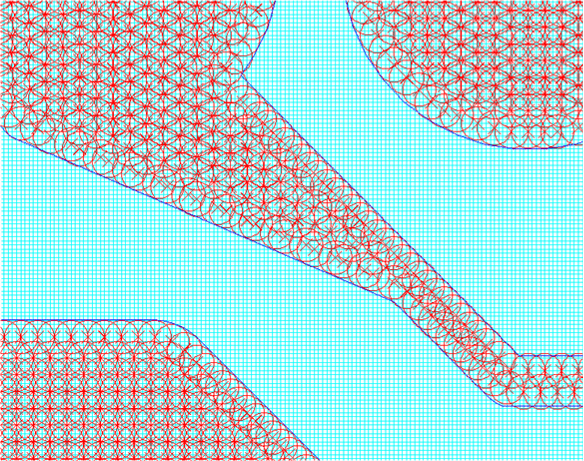Introduction
There is considerable interest in using ink jet technology to directly apply either photoresist or the actual metal conductor to a substrate thus bypassing the masking and exposure steps normally used when producing PCBs.
A problem that arises is that the diameter of the "ink" droplet is often fairly large relative to the width of the lines and gaps that one wants to image on the substrate. One cannot merely use a higher DPI to achieve line precision and edge smoothness since there will be extensive droplet overlap and the ink will run.

Droplets must be tightly spaced in order to produce a smooth edge. However this can result in so much ink that it will flow outside of the desired boundary.
To achieve optimum ink density it is necessary to "remove" a significant percent of the droplets. But if one simply attempts to uniformly remove the ink droplets the result is ragged edges and poor linewidth tolerances. One needs to precisely control spacing of droplets along the edges to form a smooth edge and possibly wider spacing along the interior to control the total ink delivered.

Optimally spaced droplets are a tradeoff between overlap and edge smoothness.
The Edge Rasterizer differs from a standard rasterizer in that it assumes that the pixel grid is much finer than the narrowest region to fill. For example, if you need to fill lines of 50 um in width you will need a grid that is 8 to 10 times finer than this value in order to precisely place the droplets. The Edge Rasterizer also knows that the spacing between pixels must be carefully controlled in order to avoid ink run out. The actual droplet diameter can be close to the minimum width of the line as long as the droplet placement can be precisely controlled.

In the snapshot above, the cyan grid represents a 5080 DPI grid (i.e. a droplet can be placed on 5 um centers). The blue line represents the conductor boundary - in this case a narrow trace about 60 um wide connecting into a round pad of approximately 450 um in diameter. The inkjet droplet is 40 um in diameter and the nominal pitch between droplets has been set by the user to 20 um.
